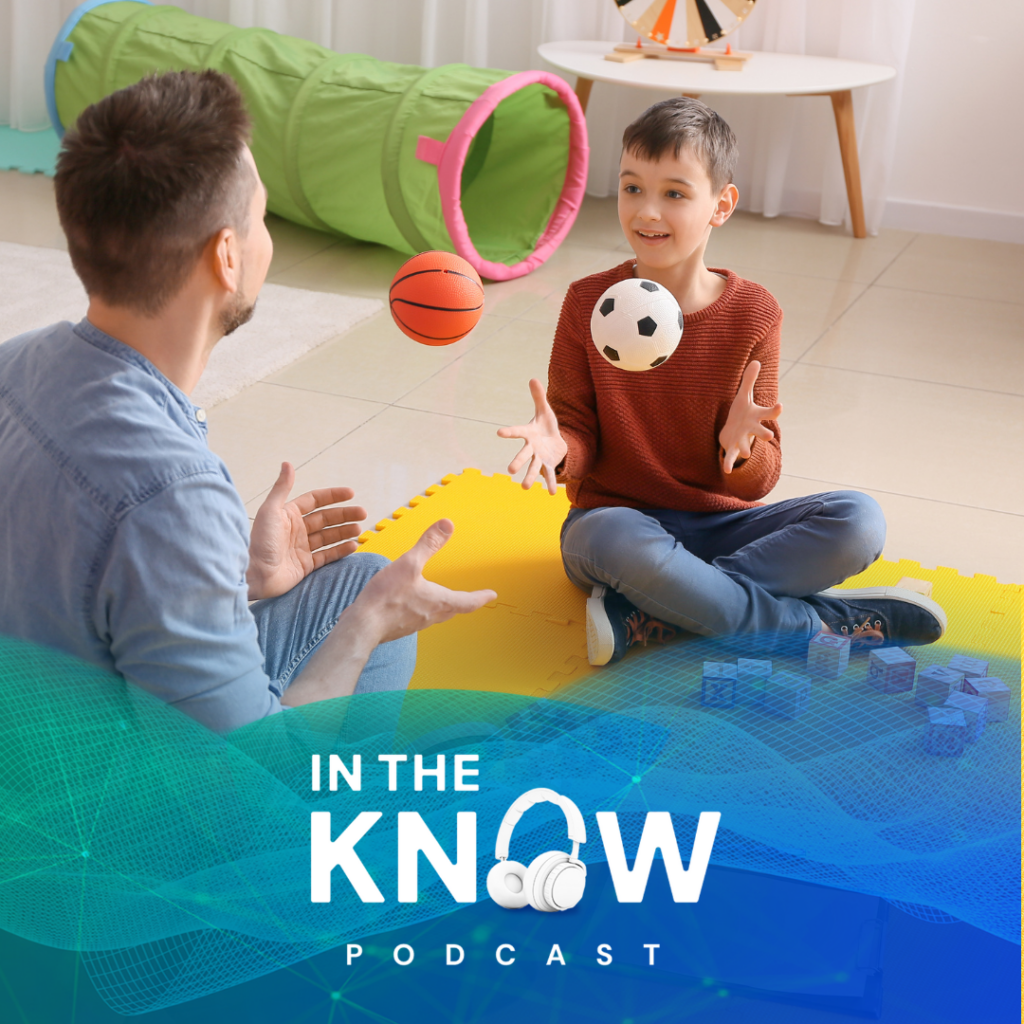Applied Behavioral Analysis (ABA) is a therapy that people have strong feelings about.
Parents making decisions about their child’s therapy may have heard very different things about ABA, ranging from how it has helped children with autism gain independence and self-management skills, to how some people with autism–who are now adults–regret or are even traumatized by their past experiences with ABA as children.
Getting such differences of opinion can make decisions about interventions difficult for families who are already reeling from the realization that their child has a developmental difference, navigating the “labyrinth” of decisions about interventions, education, insurance, and other concerns that immediately follow an autism diagnosis.
In the latest episode of “In the Know,” child and adolescent psychiatrist Dr. Jennifer Shannon has a straightforward and open conversation about what ABA looks like today with Matthew Woodard, who is a BCBA (board-certified behavior analyst) and founder of Basics NW, an active ABA practice in Washington state. Woodard is also the parent of a young child with autism.
Through this conversation, these two colleagues and experts talk frankly about what did not work well in the earlier years of ABA practice, what has changed over the last decades, and how the current practices of ABA are geared more toward building strengths and finding possibilities for children with autism and other developmental and behavioral differences.
What is ABA?
ABA is an intervention designed to help children with developmental or behavioral challenges develop skills they need for regulating their emotions and interacting with others, while lessening their problematic behavior, such as self-harm.
ABA therapy traditionally involves much repeated behavior, and when the child achieves a positive goal, they are rewarded, while negative behaviors face a negative consequence. This pattern reinforces the desired skills and discourages the unwanted behaviors.
While ABA has been shown to be effective in studies, some families and people with autism are still critical of the practice. In its earliest form, ABA included punishments along with rewards, although current practitioners are quick to point out that punishments are no longer part of the program.
Some critics also argue that the constant repetition is hard on the kids who are treated, as well as trying to make children conform to “neurotypical” behavior, instead of encouraging society to be more willing to adapt to the needs of people who are neurodiverse.
“New” ABA vs “Old” ABA
Woodard says that his conversations with families who come to him inquiring about ABA therapy often start with handling objections. “What I most commonly get at this point is questions about something they’ve read on a website, heard from a friend or someone else, or on social media…And the reality is that there have been things that are part of our field that are things we wouldn’t be doing these days. So I think it’s important that they’re asking these questions and they are getting that information.”
Woodard describes some of the differences between “old” ABA and “new” ABA, including frequent monitoring, accepting and adjusting to patient and family feedback, and focusing on the difference between “reinforcement”–which is part of the core principles of ABA–and what would be regarded as “punishment,” which is not a necessary or desirable component of ABA.
One of the other misconceptions that Woodard addresses is that the underlying principles are unique to ABA, rather than just being practices that many people use in everyday life. “I think what I really discovered is that it was so similar to coaching because that’s really what it is.” Woodard says. “Every day we’re trying to get better at a skill. Every time we’re trying to do better than we were the day before. It’s a constant process, it’s effort, and it’s persistence”
Woodard gives one example of changing our driving habits to adapt to different situations: “ So, you know when you are driving really slowly because you see a police officer on the side of the road, and then when you’re past them, you go faster? That’s behavioral contrasting! Just one example of how we use these principles to respond to things every day.”
Woodard also wants to remind listeners that ABA is based on a specific set of principles that have remained unchanged since its founding, and that while some practitioners have not used those principles as well as others, that many current ABA therapists are using those core ideas to build a foundation for success for their patients.
The most important part of contemporary ABA practice, which Woodard says is influenced not just by his professional training but by his experience as a dad, is making sure that it is designed to meet the individual needs of each family.
“In the past, I used to say ‘I’ve never been a parent, so I don’t know what it’s like 24/7,’” Woodard says. “Now that I am a parent, I see it’s a very different thing–because life is 24/7, not in this little box of 2 hours in a clinic or 8 hours in a school. That’s not life for a family. There’s so much more to it than that. It’s about how we allow them to be the best family that they can be and have the most healthy outcomes long term.”
LIsten to the entire episode to hear more of this insightful–and eye-opening–conversation about how ABA has changed and what the current best practices look like.
Our new podcast series, In the Know, regularly features conversations with top experts in behavioral and developmental health to provide information and insights for clinicians and for families of children with developmental delays.
“In the Know, Presented by Cognoa” can be found on most major podcast platforms, including Apple Podcasts, Spotify, Podbean, and others. Be sure to subscribe so you can catch the future episodes when they are available!



